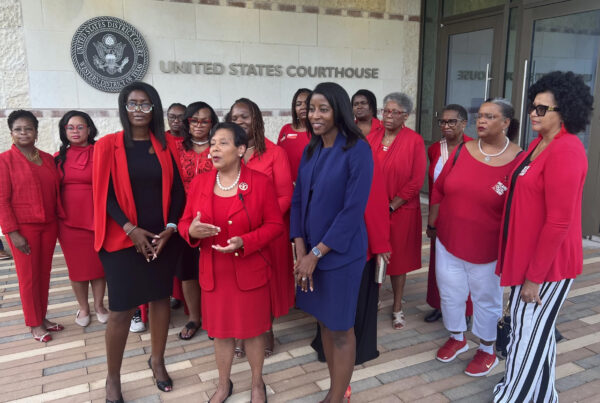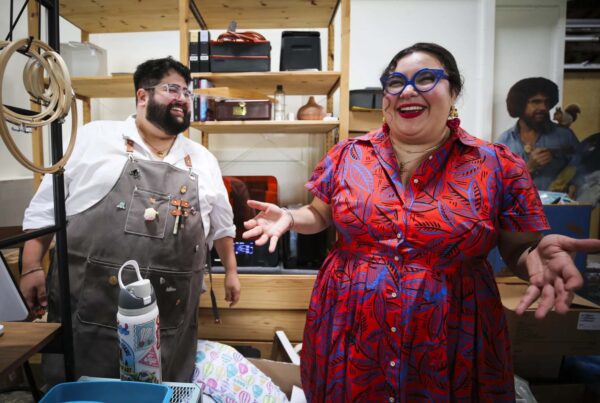Over the past year, the prices of goods and services here in the United States have gone up by around 3%, the current rate of inflation.
That 3% figure represents a big change from last summer when inflation was at 9% and many were talking about a potential recession.
Much of this drop in the inflation rate can be attributed to the central bank, which has raised interest rates over the past year and a half, making it more expensive to borrow money for things like cars, homes and starting businesses.
But does this drop in the inflation rate help the U.S. avoid a recession? To help answer the question, the Texas Standard talked to economist Allison Schrager, who writes the newsletter Known Unknowns. Listen to the interview above or read the transcript below.
This transcript has been edited lightly for clarity:
Texas Standard: As we mentioned, last summer, inflation in the United States was around 9%. Since then, it’s come down quite a bit. A lot of folks are hoping that the Federal Reserve will pull off what it calls a “soft landing” in the economy world. What is a soft landing?
Allison Schrager: I mean, I guess it is that, you know, inflation goes back to 2% and we don’t have any sort of recession and we don’t have any significant job loss. In the past, getting inflation down caused a lot of economic pain. And effectively, you know, we got inflation back and didn’t really suffer too much for it.
Well, the ideal inflation rate, as you just said, is 2%. Right now we’re at 3%. Pretty close. I mean, is there an argument that we have achieved a soft landing?
Well, I think even the soft landing camp says, “you know, we still have a little further to go.” The Fed’s target is 2%. So, you know, you’re not really there until you know you’re at 2% or I think even some would argue that interest rates are still higher than they’ve been in the past. So you’d also have to wait for maybe the Fed to cut rates, too, before we can really fully declare victory.
Okay. So is there still a possibility of the recession that was foretold this time a year ago? We’re not quite out of the woods yet?
Really, what causes a recession is often like a shock, something you didn’t see coming. And whether or not you have a recession or a mild recession or bad recession really comes down to how resilient is the economy. And I’m starting to worry that we’re starting to get a lot less resilient.
Well, what’s behind that? I mean, why is the economy becoming more brittle, in your opinion?
Well, I mean, I guess a year ago, – year and a half ago – I was like, you know, consumers have a lot of money. They saved a lot during the pandemic. So I think we’re in pretty good shape.
Interest rates were still fairly low and people had locked in low rates. But now, we’re getting further along and certainly there’s a lot of commercial real estate, a lot of corporate debt. You know, they’re going to have to refinance soon at higher rates. That might cause a lot of economic pain.
Consumers are starting to run down their balance sheet. We’re starting to see more credit card debt. So if something bad does happen, we have both the corporate and consumer sector a little less resilient than they were before.
That makes sense, that perhaps there’s not quite the wiggle room that you would like of folks and businesses to be able to access.
Exactly.
Speaking of interest rates, the Fed’s main tool in fighting inflation has been to raise interest rates. That affects what things cost – from homes to student loans. I know in the past you’ve hinted at the idea that interest rates may not go down in the short term. Could you explain a little more?
You know, longer term interest rates really more reflect long term expectations about the economy and also inflation risk. And I think, even if inflation does go down to 2%, we’ve sort of awakened the beast and now we have a generation of people who are a little bit more uncertain about inflation. They’ve experienced it now.
So I think we’re also seeing people look at inflation, they’re like, “well, people expect it to go down, so it will.” But if you look at the distribution around those expectations or how uncertain, confident people feel about those expectations, that’s widened a lot. And that’s actually very important for interest rates because interest rates are a function of what people expect inflation to be and how nervous they are about inflation. We call that an “inflation risk premium.”
So even if the Fed does cut, that doesn’t mean interest rates are going to go down because the mortgage rates are really largely a function of the ten year bond yields, not the short term rate that the Fed sets.















